For centuries, Phellinus linteus, commonly known as Mesima, has held a place of honor in traditional medicine across East Asia. In Korea, China, and Japan, it was revered not just as a natural remedy, but as a powerful symbol of resilience and longevity. Herbalists and healers have long turned to Mesima to support the immune system, soothe inflammation, and fortify the body’s defenses—particularly in times of chronic illness or imbalance.
Today, modern science is beginning to validate these time-honored uses. Researchers have uncovered a diverse range of bioactive compounds in Mesima, including polysaccharides, phenylpropanoids, and beta-glucans, each contributing to its impressive array of health benefits. Studies now highlight its potential roles in immune modulation, cancer support, antioxidant defense, and metabolic balance—bringing new life to ancient wisdom.
In this comprehensive guide, we’ll explore the traditional roots and emerging science behind Mesima, break down its many health applications, and offer insights into how to choose the highest-quality Mesima supplements for your wellness journey.
Index
- What are Functional Mushrooms?
- What Is Mesima?
- Historic Applications of Mesima
- The Science Behind The Benefits Of Mesima
- Health Benefits of Mesima
- How To Buy A Good Quality Mesima Supplement?
- Dose, Safety, Side Effects
- How To Take Mesima Mushrooms For Health Support
- Mesima for Pets
- Frequently Asked Questions
- Resources
What are Functional Mushrooms?
Referred to as 'functional mushrooms', these edible fungi boast a diverse range of bioactive compounds. Each type of functional mushroom possesses a unique bioactive profile, contributing to its ability to support specific bodily systems. Mesima, in particular, stands out for its remarkable capacity to enhance the immune system and inhibit tumour growth, among other benefits.
If you're familiar with functional mushrooms, you've likely encountered the term 'beta-glucans' or 'beta-D-glucans.' These polysaccharides play a crucial role in the immune-modulating effects of mushrooms. A more detailed exploration of Beta-Glucans will be provided in a dedicated section.
What Is Mesima?
Phellinus linteus, commonly referred to as Mesima, is a medicinal mushroom predominantly found in tropical regions of Asia, Africa, and the Americas [1]. It has long been valued in these areas, particularly within traditional Oriental medicine, where it holds a notable place for its therapeutic properties [2].
Mesima is also known by several other names, including “Meshima” and “Black Hoof Mushroom” [4]. In different regions, it goes by local names such as “sanghuang” in China, “meshimakobu” in Japan, and “sangwhang” in Korea [3].
The fruiting body of this mushroom grows back year after year and has a hard, shelf-like shape, often resembling a horseshoe, hence the name “Black Hoof Mushroom.” When fresh, the top surface is dark brown and turns black as it dries. The underside, which has small pores, starts off rusty brown and darkens when dried. Inside, the flesh is brown, with a tough black outer layer on top. The tube structures inside turn a cinnamon yellow-brown color when dried [3].
Mesima is a type of fungus that breaks down wood and typically grows on the trunks of trees such as poplar, oak, lacquer, and white mulberry. As mentioned earlier, this well-known medicinal mushroom is primarily found in tropical regions of the Americas, Africa, and East Asia, with especially high concentrations in China, Japan, and Korea [3].
Historic Applications of Mesima
Mesima has been valued for its health-supporting properties for over 2,000 years [2]. It was first documented in Shen Nong’s Herbal Classic (Shen Nong Ben Cao Jing), one of the most influential Chinese medical texts from the Han dynasty era [5]. Over time, it continued to be referenced in key traditional Chinese medicine (TCM) books, such as the New Compendium of Materia Medica (Xin Xiu Ben Cao) and the Compendium of Materia Medica (Ben Cao Gang Mu) [6, 7].
In traditional Chinese medicine, Mesima was traditionally used to support the body in a number of ways. Practitioners believed it could help stop bleeding, ease joint discomfort, relieve abdominal pain, and manage persistent digestive issues like chronic diarrhea [8].
The Science Behind The Benefits Of Mesima
Mesima has captured the attention of researchers for its remarkable range of bioactive compounds that contribute to its therapeutic potential. Backed by both traditional use and contemporary research, Mesima’s health-promoting effects are attributed to a synergistic combination of polysaccharides, phenolic compounds, immunomodulatory proteins, and other notable constituents.
Polysaccharides
Mesima contains high levels of water-soluble polysaccharides, particularly beta-D-glucans, which have been shown to support immune function, regulate inflammation, and enhance the body's resilience to stressors. These polysaccharides can modulate cytokine production, inhibit tumor cell proliferation, and support healthy cell communication [11, 15, 41, 42]. They also assist in antioxidant defense by reducing reactive oxygen species (ROS) and protecting cells from oxidative damage [18, 29].
Beta-Glucans
Beta-glucans are naturally occurring polysaccharide compounds found in the cell walls of certain grains, fungi, bacteria, and other sources. Beta-glucans function as Biological Response Modifiers (BRMs), modulating the immune system and adjusting its activity as needed [62].
Mesima is especially rich in beta-glucans with (1→3) and (1→6) linkages, known for their potent immunomodulatory effects. These compounds enhance natural killer (NK) cell activity, reduce levels of inflammatory cytokines like TNF-α and IL-6, and promote the production of anti-inflammatory cytokines like IL-10. This dual action supports immune balance and may be particularly beneficial in managing chronic inflammation and boosting immune resilience [15, 16, 17].
Proteoglycans and Polysaccharide-Protein Complexes (PPCs)
Mesima also features proteoglycans and polysaccharide-protein complexes, which stimulate both innate and adaptive immunity. These compounds activate macrophages, support B lymphocyte proliferation, and increase the expression of immune-stimulating markers such as CD80, CD86, and IFN-γ [12, 13, 14]. Their action contributes to enhanced immune surveillance and a stronger response to cellular stress or infection.
Immunomodulatory Proteins and Cytokine Modulators
Mesima helps regulate immune responses by influencing cytokine profiles. It promotes the release of protective cytokines like IFN-γ and IL-12, while inhibiting pro-inflammatory ones such as IL-1β, IL-6, and TNF-α. These effects are mediated through the suppression of NF-κB and activation of protective pathways such as Nrf2 and HO-1 [1, 9, 10, 15].
Furans
Mesima contains furan derivatives such as Phellinusfurans A and B and 5-hydroxymethyl-2-furaldehyde, which have shown immune-modulating and antioxidant effects. Phellinusfurans A and B demonstrated strong anti-complementary activity, helping to regulate immune overactivation and potentially offering support in autoimmune conditions [35]. 5-hydroxymethyl-2-furaldehyde has exhibited antioxidant effects, contributing to oxidative stress reduction and improved metabolic balance [27].
Phenylpropanoids
Mesima includes a wide array of phenylpropanoids, which are plant- and fungi-derived compounds known for their antioxidant, anti-inflammatory, and anticancer activities. These include:
3,4-dihydroxybenzalacetone (DBL): Known for strong anti-inflammatory and antioxidant activity via suppression of MAPK, PI3K/AKT, and NF-κB pathways, while boosting antioxidant enzymes like SOD and GPx [1, 10, 52].
- Hispidin: A potent antioxidant that regulates oxidative stress in heart and liver cells and offers protection through modulation of apoptosis-related proteins such as caspase-3, Bax, and Bcl-2 [20, 21, 33].
- Meshimakobnol A & B and Phellifuropyranone A: Display strong antiproliferative activity against melanoma and lung cancer cells with GI50 values comparable to paclitaxel [53, 54].
- Phelligridimer A, Hypholomine B, Interfungin A: These compounds showed inhibitory activity on enzymes like aldose reductase, relevant for preventing diabetic complications, and also help reduce oxidative stress [25, 26].
- Protocatechualdehyde, Davallialactone, Inoscavin A: Offer protective effects against glycation and oxidative damage, and contribute to blood sugar regulation [25, 26, 27].
Other Noteworthy Phenolic Compounds
Mesima also contains:
- 4-(3,4-dihydroxyphenyl)-3-buten-2-one: Identified as a phenolic compound with protective effects on the stomach lining. It acts by reducing lipid peroxidation and activating antioxidant enzymes, helping prevent damage from NSAIDs like naproxen [34].
- Hispolon: A polyphenolic compound with potent anticancer properties. It acts on multiple fronts—blocking cell cycle progression, triggering apoptosis through Fas/FasL and mitochondrial pathways, activating MAPK pathways, and enhancing sensitivity to TRAIL therapy in cancer cells [44–50]. It also selectively targets tumor cells without harming healthy ones, adding therapeutic safety [46].
Altogether, these compounds position Mesima as a compelling natural agent for supporting whole-body wellness, from immunity and inflammation to metabolic health and cellular protection.
Health Benefits of Mesima
Mesima has long been treasured in traditional medicine, but today, modern science is beginning to uncover the full extent of its therapeutic potential. Backed by centuries of use and an expanding body of clinical research, this powerful medicinal mushroom is gaining recognition for its diverse health-supporting properties.
Health Benefits at a Glance:
- Mesima’s Potential Anti-inflammatory Properties
- Mesima May Strengthen the Immune System
- Mesima’s Potential Antioxidant Effects
- Mesima May Support Viral Defence
- Mesima May Help Regulate Blood Sugar
- Mesima May Support Liver Protection
- Mesima May Support Brain and Nerve Health
- Mesima and Prostate Function
- Mesima’s Potential Role in Heart Health and Cholesterol Support
- Mesima May Offer Stomach Lining Protection
- Mesima’s Anticancer Potential
-
Emerging Research - Mesima’s Potential for Skin and Cellular Aging Support
Mesima’s Potential Anti-inflammatory Properties
Mesima shows strong anti-inflammatory potential by blocking key inflammatory signals and boosting the body’s natural defense systems. Research suggests it may help calm overactive immune responses, reduce tissue irritation, and support long-term resilience—making it a promising option for those dealing with chronic inflammation or flare-ups.
Various studies have demonstrated that n-butanol (n-BuOH) extracts from the fruiting body of Mesima may reduce inflammation by targeting key molecules involved in the body’s inflammatory response. These extracts help lower the levels of nitric oxide (NO), as well as the expression of inducible nitric oxide synthase (iNOS) and matrix metalloproteinase-9 (MMP-9)—all of which play a role in driving inflammation [1,9]. By reducing these key inflammatory triggers, Mesima may help ease symptoms like swelling, joint stiffness, or general discomfort that are common in chronic inflammatory conditions.

At the same time, n-BuOH extracts activate the body’s natural defense system by increasing the expression of heme oxygenase-1 (HO-1) through the PKCδ/Nrf2/ARE signaling pathway, particularly in immune cells stimulated with lipopolysaccharide (LPS) [1,9]. This means the anti-inflammatory effect becomes stronger over time as the body responds to stress or immune triggers. These effects suggest Mesima may help the body build a more resilient and long-lasting defense against stress-related inflammation, especially if a person struggles with flare-ups over time.
Another compound found in the fruiting body of Mesima called 3,4-Dihydroxybenzalacetone (DBL) has shown impressive anti-inflammatory effects in scientific studies [1,10]. DBL helped reduce inflammation by blocking key signaling pathways—specifically MAPK and NF-κB, which are often overactive during inflammation. It did this by lowering the activity of Toll-like receptor 4 (TLR4) and the PI3K/AKT pathway, which are known to trigger the body’s inflammatory response. This suggests DBL may support healthier immune function by preventing the body from overreacting to stress or minor triggers—something especially helpful for those with autoimmune or inflammatory conditions.
DBL also significantly reduced the levels of several inflammation-related proteins, including iNOS, COX-2, TNF-α, IL-1β, IL-6, MMP-2, and MMP-9—all of which contribute to swelling, tissue damage, and pain [1,10]. At the same time, it boosted the body’s own antioxidant defense system by increasing protective enzymes like superoxide dismutase (SOD), catalase, and glutathione peroxidase (GPx). This means DBL could help calm inflammation while also protecting tissues from further damage—potentially offering relief from conditions like respiratory issues, joint pain, or skin irritation.
Altogether, these actions helped DBL protect lung tissue in mice with LPS-induced acute lung injury, a model commonly used to study serious inflammation in the lungs [1,10]. These findings suggest DBL may be a powerful natural compound for calming inflammation and protecting tissues under stress. Mesima’s DBL content may offer natural support for lung health and recovery for persons dealing with respiratory concerns or that are exposed to environmental irritants.
Another experiment showed that treating immune cells with polysaccharides from Mesima for up to 72 hours reduced pro-inflammatory cytokines (TNF-α, IL-1β, IL-2, IL-6, and IL-12) while increasing anti-inflammatory cytokines like IL-4 and IL-10. These effects were linked to the suppression of NF-κB, a major inflammatory switch in the body [11].
In addition, Mesima’s polysaccharides, in particular Beta-D-Glucans, have been shown modulate the immune system to help calm harmful inflammation by reducing TNF-α and IL-6 while encouraging the production of IL-10, an anti-inflammatory cytokine [15].
This evidence suggests that Mesima doesn’t just block inflammation—it also helps shift the immune system toward a more balanced, calming state, which may support long-term health and resilience.
Overall, the anti-inflammatory effects of Mesima are believed to work by blocking multiple inflammatory signals—including JNK–NF-κB–AP-1, ROS—while also activating the HO-1 pathway, which plays a protective role in reducing inflammation. These findings suggest that Mesima may have real potential in supporting people with inflammatory conditions.
Mesima May Strengthen the Immune System
Research shows that compounds found in Mesima, particularly its polysaccharides and proteoglycans, can support the immune system in several important ways.
Studies have found that proteoglycans found in the Mesima fruiting body can boost the activity and growth of B lymphocytes, which are key cells involved in producing antibodies. This enhancement is partly due to increased expression of CD80 and CD86, molecules that improve communication between immune cells, potentially leading to a quicker and more efficient immune response to infections [12].
Another study showed that a hot water extract of Mesima helps T cells produce interferon-γ (IFN-γ), a powerful cytokine that enhances the body's ability to detect and destroy infected or abnormal cells, offering potential support in maintaining cellular health [13].

A polysaccharide–protein complex (PPC) extracted from Mesima has also been shown to activate macrophages and natural killer (NK) cells, which are essential for identifying and removing harmful invaders like viruses and damaged cells. This may help support immune surveillance and quicker recovery from illness, while also promoting the growth of B cells to sustain longer-term immune readiness [14].
Additionally, Mesima’s polysaccharides, particularly Beta-D-Glucans, help modulate the immune system by reducing pro-inflammatory markers such as TNF-α and IL-6 and promoting anti-inflammatory cytokines like IL-10 [15]. This could be particularly beneficial for reducing chronic inflammation, supporting immune balance, and protecting the body from overactive immune responses.
Furthermore, two unique compounds found in Mesima—phellinusfurans A and B—showed strong anti-complementary activity in laboratory tests. The complement system is part of the immune system that, when overactive, can contribute to inflammation and autoimmune reactions. These compounds helped regulate this response more effectively than the plant-based antioxidant rosmarinic acid, suggesting a potential role for Mesima in managing immune overreactions [35].
Mesima’s immune effects extend beyond lab settings. In human clinical trials, Mesima extract was shown to significantly increase NK cell activity compared to a placebo, meaning it may help enhance the body’s natural ability to fight viruses or abnormal cells [16,17]. Participants also showed improvements in levels of immune-related proteins such as interleukin-6 (IL-6), immunoglobulin G1 (IgG1), and IgM, which are involved in immune signaling and long-term defense. These improvements were observed without any safety concerns, supporting Mesima’s potential as a safe and effective immune-enhancing supplement [16,17].
Altogether, these findings suggest that Mesima may help strengthen immune defences, regulate inflammation, and promote a more balanced immune response.
Mesima’s Potential Antioxidant Effects
Mesima has demonstrated promising antioxidant potential through a variety of studies.
Polysaccharides from Mesima were shown to protect liver cells from damage caused by tacrine, a compound known to induce liver toxicity, by reducing harmful reactive oxygen species (ROS) in cells—thereby supporting healthy liver function and mitochondrial performance [18]. These findings suggest Mesima may help protect the liver from toxins and support overall energy production by keeping cells and mitochondria functioning properly.
In addition to polysaccharides, Mesima fruiting body contains compounds like hispidin [19], which demonstrated the ability to counter oxidative stress by reducing damaging molecules such as ROS and boosting levels of glutathione (GSH), one of the body’s key internal antioxidants [20]. This means Mesima may strengthen the body’s natural defense system and help reduce the effects of environmental stressors, contributing to healthier aging and improved resilience.

Hispidin derivatives were also found to be highly effective in scavenging free radicals due to their molecular structure, using a mechanism known as proton-coupled electron transfer (PCET) [21]. This antioxidant activity may help protect cells from long-term oxidative damage—supporting healthy skin, brain function, and slowing down visible signs of aging.
Hispidin was also found to protect heart cells from oxidative damage. In lab studies, hispidin regulated key cellular pathways to block harmful proteins like caspase-3 and Bax, while boosting protective ones like Bcl-2 [33].
Mesima May Support Viral Defence
Nitric oxide (NO) is a natural molecule the body produces that plays a big role in many important processes—including defending against viruses, bacteria, and even harmful cells like tumors. It’s made by immune cells (specifically macrophages) when they’re activated by signals like IFN-γ and LPS, which are known to trigger immune responses [22,23].

In one study, researchers looked at how Mesima and Krestin affected NO production in immune cells from mice (RAW 264.7 macrophages) [24]. Normally, these cells make a small amount of NO (about 2.5 µM). But when treated with Mesima, NO production increased significantly to 11.6 µM, showing that it helped stimulate the immune cells to produce more of this protective molecule.
By enhancing nitric oxide production in immune cells, Mesima may help the body better defend against infections and potentially harmful cells, including abnormal or cancerous ones—making it a valuable natural support for immune health and protection.
Mesima May Help Regulate Blood Sugar
Managing blood sugar is essential for long-term health, especially for those at risk of or living with diabetes. Emerging research suggests that Mesima may offer natural support in this area. Compounds found in its fruiting body have shown promising effects in lab studies, helping to regulate enzymes linked to blood sugar metabolism and protect the body from sugar-related damage [25,26,27].
Certain natural compounds found in Mesima’s fruiting body—such as phelligridimer A, protocatechualdehyde, davallialactone, hypholomine B, interfungin A, and inoscavin A—have been shown in lab studies to block an enzyme called aldose reductase [25]. This enzyme plays a role in diabetic complications like nerve damage and cataracts, especially when blood sugar levels stay high over time. In both rat and human models, these compounds showed strong enzyme-inhibiting effects, suggesting they may help prevent some of the long-term damage linked to poorly managed diabetes [25].

In addition, protocatechualdehyde, davallialactone, and inoscavin A helped reduce the harmful effects of a substance called methylglyoxal. Methylglyoxal is a byproduct of sugar metabolism that can damage proteins in the body—a process tied to aging and diabetes complications. These Mesima compounds slowed this damaging process down in lab tests [26].
Mesima’s protocatechualdehyde and 5-hydroxymethyl-2-furaldehyde also inhibited the oxidation of L-tyrosine, a reaction linked to oxidative stress and metabolic imbalance [27]. This action may help reduce oxidative stress and support healthier metabolism—potentially aiding in the prevention of complications linked to blood sugar imbalances, such as fatigue, inflammation, or long-term metabolic issues.
Emerging research has shown that the natural compounds in Mesima—specifically its polysaccharides—may help support healthy blood sugar levels by improving how the gut and liver work together. In a 2024 study on type 2 diabetes, researchers found that Mesima’s polysaccharides improved common diabetes symptoms and played a key role in restoring balance to the gut microbiome [36].
The study revealed that Mesima increased certain beneficial gut bacteria, including Bacteroides, Parabacteroides, and Alistipes [36]. These microbes are known to boost the production of short-chain fatty acids (SCFAs) and help regulate bile acid metabolism—both of which are important for managing blood sugar.
SCFAs and bile acids work together to stimulate the release of GLP-1, a hormone that prompts the body to release insulin and lower blood sugar levels. Mesima’s polysaccharides were shown to increase GLP-1 levels, which in turn improved insulin sensitivity and helped reduce blood sugar levels in diabetic models. These findings suggest that Mesima may support blood sugar regulation by promoting a healthier gut environment, enhancing bile acid balance, and encouraging insulin release.
Mesima May Support Liver Protection
Mesima has shown strong potential to protect the liver, especially in cases of damage linked to oxidative stress.
In a 2012 study, a polysaccharide extracted from the wild fruiting body of Mesima helped guard against liver fibrosis caused by thioacetamide (TAA), a toxin known to damage the liver [28]. This liver protection was achieved by boosting the body’s natural antioxidant defences—raising levels of cysteine, glutathione (GSH), and detoxifying enzymes like GSTA4—while lowering the presence of harmful elements such as free iron, free heme, and stress-related proteins [28]. These changes support better liver function and reduce long-term liver strain.

In a separate study conducted in 2022, Mesima’s polysaccharides also helped protect the liver from acetaminophen (APAP)-induced acute liver injury, one of the most common causes of liver toxicity today [29]. Researchers found that Mesima reduced key liver enzymes in the blood—ALT and AST—which are often elevated during liver damage.
It also helped maintain healthy glutathione levels and lowered markers of inflammation like myeloperoxidase (MPO) [29]. These protective effects were linked to the activation of the AMPK/Nrf2 signaling pathway, a critical defence system against oxidative stress [29].
Additionally, Mesima promoted autophagy—a process where cells clean up and repair themselves—through increased expression of proteins like ATG3, ATG5, ATG7, and ATG12 [29]. However, the benefits were not seen in mice that lacked the Nrf2 gene, highlighting how essential this pathway is to Mesima’s protective effects.
Together, these findings suggest that Mesima may support liver health by reducing oxidative damage, enhancing detoxification, and encouraging cellular repair—making it a promising option for those looking to protect their liver under stress.
Mesima May Support Brain and Nerve Health
Emerging research suggests that Mesima may have benefits for the brain and nervous system, particularly in relation to age-related cognitive decline.
In one study, polysaccharides extracted from the fruiting body of Mesima were found to play a role in supporting neuron health and protecting against neurodegenerative conditions [30]. When tested on human immune cells (THP-1 monocytes), these polysaccharides helped trigger a beneficial process known as apoptosis—the natural removal of damaged or dysfunctional cells. This effect was achieved by increasing levels of reactive oxygen species (ROS) and mitochondrial membrane potential (MMP), both of which are involved in cellular signaling and energy regulation [30].

These findings point to Mesima’s potential for maintaining healthy brain function and supporting the body’s natural cellular clean-up processes—an area of growing interest for conditions linked to aging and cognitive stress.
Mesima and Prostate Function
Extracts from the fruiting body of Mesima have shown promising results for prostate health.
In a 30-day study, Mesima helped ease prostatitis and inhibited the progression of benign prostatic hyperplasia (BPH)—a common condition that causes prostate enlargement. It did this by suppressing the activity of dihydrotestosterone (DHT), a hormone involved in prostate growth, through the enzyme 5-alpha-reductase. Impressively, its effects were comparable to finasteride, a well-known medication used for BPH [31].
However, it is important to note that in another study, Mesima enlarged the prostate [60]. Due to its potential to promote prostate enlargement, the use of Mesima should be approached with caution in individuals diagnosed with prostate enlargement [60].
Mesima’s Potential Role in Heart Health and Cholesterol Support
Mesima offers a dual approach to heart health by supporting cholesterol levels and protecting heart cells.
Mesima’s polysaccharides have been shown to support healthy cholesterol levels by helping immune cells clear out excess cholesterol through the PPAR-γ/ABCA1/ABCG1 pathway—a key mechanism that may reduce the risk of plaque buildup in the arteries and help prevent atherosclerosis. However, research also suggests that very high doses may reduce this effect due to cellular stress, so balanced intake is important [32].

In addition, Mesima contains a powerful antioxidant called hispidin, which helps protect heart cells from oxidative damage. In lab studies, hispidin regulated key cellular pathways to block harmful proteins like caspase-3 and Bax, while boosting protective ones like Bcl-2 [33]. This indicates that Mesima may offer a layer of defense for heart cells under stress.
Together, these effects suggest that Mesima may help defend the cardiovascular system from both cholesterol-related issues and oxidative stress, supporting long-term heart function and resilience.
Mesima May Offer Stomach Lining Protection
A specific compound found in Mesima, called 4-(3,4-dihydroxyphenyl)-3-buten-2-one, was shown to protect the stomach lining in animal studies. It helped prevent ulcers caused by naproxen (a common pain-relieving drug) by reducing harmful lipid peroxidation and activating antioxidant enzymes that defend against tissue damage [34].

This points to Mesima’s potential in protecting the digestive tract, especially for those prone to gastric irritation.
Mesima’s Anticancer Potential
Medicinal mushrooms have long been valued for their potential role in supporting the body’s natural defenses, including their ability to fight abnormal cell growth. Research suggests that much of this power comes from their polysaccharides. According to Wang et al. (2017), the activity of these polysaccharides is closely tied to their unique structure and how they’re made within the mushroom [37]. In particular, those rich in β-glucans with β-(1→3) linkages have shown stronger anticancer potential [38,39]. These compounds may work by helping to prevent cancer from developing, boosting the immune system’s ability to respond, and directly suppressing tumor growth [40].
Studies have shown that various compounds found in Mesima have anticancer potential, however, polysaccharides and hispolon are the most notable.
We’ll first dive into how the compounds found in Mesima could potentially help defend against cancer, after which we’ll explore Mesima’s effects on specific cancers.
Anticancer Properties of Polysaccharides
Mesima’s polysaccharides appear to slow tumor growth primarily by disrupting the cell cycle, particularly around the S phase—the stage where DNA is replicated and cells prepare to divide [41]. This stage is crucial for cancer cells, which often divide uncontrollably. The polysaccharides achieve this by reducing the expression of key proteins involved in pushing the cell cycle forward, such as cyclin D1, cyclin E, and CDK2 (cyclin-dependent kinase 2) [41, 42]. These proteins are especially important for the transition from the G1 phase to the S phase, so their downregulation prevents cancer cells from progressing through this critical checkpoint, effectively stalling their ability to multiply [41].
At the same time, the polysaccharides increase the expression of P27^kip1, a cyclin-dependent kinase inhibitor that acts like a natural brake on cell division [41, 42]. By strengthening this internal braking system, the polysaccharides further contribute to cell cycle arrest, meaning the cancer cells are stuck and cannot continue dividing. Interestingly, cyclin A, a protein normally involved in regulating DNA replication during the S phase, was also found to be upregulated, though researchers are still unsure what role it plays in the context of S-phase blockage [42].
These findings support the idea that Mesima’s polysaccharides can halt cancer cell proliferation—the rapid, uncontrolled growth of tumor cells—by blocking entry into or progression through the S phase. However, one study notes that it's still unclear whether the reduction in CDK2 is directly responsible for this blockage [42], highlighting that while the mechanism seems consistent—interfering with key regulators of the cell cycle—some molecular details remain to be clarified.
Importantly, Mesima’s polysaccharides may also offer supportive benefits during chemotherapy. In a separate experiment, when Mesima polysaccharides were used alongside camptothecin 11 (CPT-11)—a chemotherapy drug— the polysaccharides were found to reduce the side effects of the drug [43]. This suggests that beyond slowing tumor growth, Mesima may play a protective role when used in combination with conventional cancer treatments, potentially enhancing patient tolerance and treatment outcomes.
Anticancer Properties of Hispolon
Hispolon, a natural compound found in the Mesima fruiting body, has shown promising anticancer effects by working through several important mechanisms in the body. In cancer cells, it helps stop their growth by interfering with the cell cycle—the process cells use to grow and divide. Specifically, it blocks the transition from the resting or preparation phase (G0/G1) into the phase where DNA is copied (S phase), which prevents cells from multiplying [44]. It does this by increasing levels of proteins like p53, p21, and p27, which act like quality control markers, stopping damaged cells from progressing further. At the same time, it lowers levels of proteins that normally help push the cycle forward, like cyclin D1, cyclin E, CDK2, and CDK4 [44]. In a separate study, it was also found to block a later stage of the cycle (G2/M phase), where cells prepare to divide, again by increasing p53 and p21, and reducing cyclin D4 [45].
Hispolon also helps trigger apoptosis—programmed cell death—which is a natural way the body removes damaged or dangerous cells like cancer cells. It activates both external and internal apoptosis pathways. On the outside, it increases the expression of Fas and FasL, proteins that send “death signals” to cells [44]. On the inside, it promotes the release of cytochrome c from the mitochondria and increases the Bax/Bcl-2 ratio, both of which signal that the cell should break itself down [44]. This leads to the activation of enzymes called caspases—specifically caspase-3, -8, and -9—which carry out the process of dismantling the cell [46, 47]. One key protein called PARP, which normally helps with DNA repair, also gets broken down during this process—something that’s considered a hallmark of apoptosis [47].
Importantly, Hispolon seems to do this selectively, meaning it targets cancer cells while leaving healthy cells unharmed. For example, in studies on melanoma cells (B16-F10), Hispolon triggered apoptosis by increasing caspase activity without affecting normal skin fibroblast cells (Detroit 551) [46]. This suggests it could potentially support cancer treatment with fewer side effects.
Hispolon also interacts with important signaling pathways in the body, like the MAPK pathway, which responds to stress and growth signals. It activates key proteins that further promote cell death in damaged cells, including JNK1/2, ERK1/2, and p38 MAPK, which trigger the caspases and breakdown of PARP [47].
Another benefit is that Hispolon reduces levels of estrogen receptor alpha (ER-α), a protein involved in hormone-driven cancers like some forms of breast cancer. By lowering ER-α at both the gene and protein level, Hispolon helps slow the growth of these hormone-sensitive cancer cells [48].
It also boosts the effectiveness of cancer therapies like TRAIL, a protein that helps selectively kill cancer cells. Hispolon makes cancer cells more sensitive to TRAIL by lowering survival proteins such as cFLIP, Bcl-2, and Bcl-xL, and activating stress-related pathways like ROS–ERK–CHOP [49]. It also increases levels of proteins like Bax, truncated Bid, and p53, which push cells further toward apoptosis and increase caspase activation [49].
Another important aspect of cancer progression is the spread of cancer to other parts of the body, known as metastasis. Hispolon has been shown to block a key step in this process—epithelial–mesenchymal transition (EMT)—by interfering with the TGF-β–Snail/Twist pathway, helping to reduce the risk of cancer spreading [50].
Altogether, these mechanisms make Hispolon a powerful compound that could support the body’s natural ability to stop abnormal cell growth, promote the removal of damaged cells, enhance the effectiveness of existing treatments, and potentially reduce the spread of cancer—all while protecting healthy cells [44,46,47,49,50,45].
Anticancer Properties of Other Compounds
One particularly promising compound found in Mesima is 3,4-dihydroxybenzalactone. This natural molecule has shown the ability to stop cancer cells from spreading by blocking two key enzymes—MMP-2 and MMP-9—which normally help cancer break down surrounding tissues, making it easier for the disease to invade other parts of the body. In simple terms, by stopping these enzymes, the compound helps limit the cancer's ability to metastasise, meaning it helps limit cancer’s ability to spread from its original location to other parts of the body.
It also interferes with several important signalling pathways that cancer cells use to survive, grow, and move around. These include the PI3K/AKT, MAPKs, and FAK/paxillin pathways—each of which plays a major role in keeping cancer cells alive and helping them spread. By disrupting these internal communication systems, the compound makes it much harder for the cancer to thrive.
Another crucial mechanism is its influence on the process called epithelial–mesenchymal transition (EMT), which is how cancer cells become more mobile and invasive. 3,4-dihydroxybenzalactone was found to target and regulate the proteins Snail and Slug, both of which are involved in EMT, essentially making cancer cells less aggressive.
Finally, it was shown to affect the NF-κB and Nrf2 pathways, which are central to how cells handle inflammation and oxidative stress. By modulating these pathways, the compound may not only help reduce inflammation in the body but also protect healthy cells from the kind of oxidative damage that can lead to chronic disease and tumour development [52].
In addition to this, researchers have identified several other bioactive molecules in Mesima that may help stop cancer cells from multiplying. These include Phellifuropyranone, Meshimakobnol A, and Meshimakobnol B. When tested on mouse melanoma and human lung cancer cells, each of these compounds showed strong antiproliferative activity—meaning they slowed or stopped cancer cell growth.
While we still don’t fully understand exactly how these compounds work, their early results are encouraging, and further studies are needed to see how well they perform in living organisms [53, 54].
Mesima and Colorectal Cancer
In studies focused on colorectal cancer, polysaccharides from Mesima were tested in vitro (in laboratory settings) on HT29 cells. These polysaccharides successfully blocked cancer cells from progressing into the S-phase of the cell cycle, a crucial stage where DNA replication occurs.
By halting the cells at this point, they prevented them from dividing and multiplying.
Mechanistically, they downregulated cyclin D1, cyclin E, and CDK2—proteins that act as key drivers of cell cycle progression—thereby stopping the replication machinery. This kind of blockage means the tumor can't grow further, giving the immune system or other treatments a better chance to work effectively.
At the same time, these polysaccharides upregulated P27^kip1, a cell cycle inhibitor, which further reinforces this growth arrest [41].
Interestingly, while the cancer cells stopped growing, there was no induction of apoptosis (programmed cell death) or autophagy (self-digestion of cell components). This means the treatment did not kill the cells outright, but rather suspended their proliferation, potentially allowing for a more controlled therapeutic window.
Furthermore, when these polysaccharides were combined with camptothecin 11 (CPT-11), a chemotherapy drug, in both HCT116 and HT29 cell lines, they reduced the drug’s side effects, indicating a potential protective effect on healthy tissue during chemotherapy [43].
Mesima and Liver Cancer
In liver cancer research involving HepG2 cells, polysaccharides from Mesima were tested both in vitro (in laboratory settings) and in vivo (on living mice). These polysaccharides blocked the entry of cancer cells into the S-phase of the cell cycle, a critical point where DNA replication takes place. By stopping the cells from replicating their DNA, the treatment effectively slowed their ability to multiply.
This effect was achieved by increasing the expression of P27^kip1 and cyclin A. Cyclin A helps prepare the cell for DNA replication, while P27^kip1 acts as a checkpoint inhibitor, putting the brakes on cell cycle progression.
At the same time, the treatment reduced the levels of cyclin D1, cyclin E, CDK2, and calreticulin—proteins that facilitate the cell cycle and help cancer cells survive—further suppressing tumor progression [42].
In animal studies, this approach significantly inhibited tumour growth, confirming its potential effectiveness beyond the lab setting.
Additionally, a protein-protein interaction analysis highlighted the roles of DJ-1 and 14-3-3 proteins, suggesting that these proteins might serve as biomarkers for evaluating how well patients respond to treatment in hepatocellular carcinoma [51].
In a 2024 study, researchers explored how focal adhesion kinase (FAK) influences the development of hepatocellular carcinoma (HCC), the most common form of liver cancer. They found that FAK plays a key role in helping the tumour grow by manipulating the body’s immune response. Specifically, high levels of FAK led to an increase in regulatory T cells (Tregs) and a shift in macrophages—immune cells—from the tumor-fighting M1 type to the tumor-supporting M2 type [58].
This shift created a more cancer-friendly environment and was accompanied by increased tumour cell growth, spread, and resistance to cell death. These harmful effects were driven by the activation of several major cell signalling pathways: PI3K/AKT, JAK/STAT3, and p38/JNK.
To test a potential solution, the team studied Mesima. In tumor-bearing mice, Mesima showed strong antitumor effects in a dose-dependent manner. It worked by reducing FAK activity, lowering Treg and M2 macrophage levels, and increasing M1 macrophages, thereby shifting the immune balance back in favour of the body’s natural defence [58].
This was achieved by blocking the same cancer-promoting pathways that FAK activates. These findings show that Mesima could serve as a natural, immune-restoring therapy for liver cancer, helping to suppress tumour growth by reactivating the body’s own anti-cancer responses.
Mesima and Melanoma (Skin Cancer)
In melanoma studies using B16-F10 cells, hispolon demonstrated dual functionality. It suppressed melanin production by blocking tyrosinase and MITF, which are enzymes and factors essential for pigment synthesis. This means that hispolon can potentially help regulate skin pigmentation, which is beneficial for those with conditions related to excessive pigmentation.
Hispolon induced apoptosis (cell death) by activating caspase-3, -8, and -9. These caspases are part of the cell’s suicide machinery, responsible for systematically dismantling and eliminating damaged or unwanted cells. This effect promotes the elimination of cancerous cells, helping to reduce the growth and spread of melanoma.
Importantly, hispolon did not impact normal Detroit 551 fibroblast cells, suggesting it selectively targets melanoma cells without harming healthy tissue. This selectivity means hispolon could be a safer treatment option, reducing the risk of damage to healthy cells while focusing on cancer cells [46].
Mesima and Leukemia
In the context of leukaemia, specifically in NB4 human leukaemia cells, the phenolic compound hispolon from Mesima was tested and found to prevent these leukaemia cells from transitioning from the G0/G1 phase into the S-phase, effectively stopping DNA synthesis.
This inhibition was facilitated by an increase in tumor-suppressor proteins such as p53, p21, and p27, all of which enforce checkpoints or initiate repair or cell death in damaged cells. By reinforcing these internal safeguards, the cells are less likely to divide uncontrollably—a hallmark of cancer.
At the same time, the levels of cyclin D1, cyclin E, CDK2, and CDK4 were reduced, taking away the cell's ability to push forward with division. This adds another layer of control, helping to arrest the growth of the cancer cells.
Hispolon also triggered programmed cell death (apoptosis) through both the extrinsic pathway—by increasing Fas and FasL—and the intrinsic mitochondrial pathway—by increasing cytochrome c and altering the Bax/Bcl-2 ratio [44]. This means hispolon not only stops cancer cells from growing, but also helps the body eliminate them via natural cell death mechanisms.
Mesima and Nasopharyngeal Carcinoma (NPC)
In nasopharyngeal carcinoma, human cell lines HONE-1 and NPC-039 were treated with hispolon. Hispolon activated MAPK signalling pathways including JNK1/2, ERK1/2, and p38 MAPK, which are typically engaged when a cell is under stress or undergoing transformation.
These pathways led to the activation of apoptotic enzymes caspase-3, -8, and -9, and also resulted in PARP cleavage—a hallmark of apoptosis [47]. This means hispolon helped trigger the natural death of cancer cells, which can prevent them from growing and spreading further in the body.
The effects were dose- and time-dependent, indicating that higher and longer exposure to hispolon led to greater cancer cell death.
Mesima and Colon Cancer
In colon cancer (HCT116 cells), hispolon enhanced TRAIL-induced apoptosis. TRAIL is a molecule that binds to death receptors on the surface of cancer cells and triggers programmed cell death.
Hispolon amplified this process by reducing pro-survival proteins such as cFLIP, Bcl-2, and Bcl-xL, making it easier for cancer cells to undergo apoptosis.
Furthermore, it activated the ROS–ERK–CHOP signaling pathway, which plays a role in the cellular stress response, and increased the expression of apoptotic regulators like Bax, truncated Bid, and p53, along with caspase-3, -8, and -9 [49].
This combination of effects not only promotes the death of cancer cells but may also help overcome resistance in treatment-resistant colon cancers, potentially making future therapies more effective and reducing the chance of relapse.
Mesima and Glioblastoma (Brain Cancer)
In glioblastoma U87MG cells, hispolon reduced cell proliferation (the process by which cells grow and divide) and triggered apoptosis (cell death). This process helps slow the growth of cancer cells by causing them to stop dividing and eventually leading to their elimination.
It did so by arresting the cell cycle at the G2/M checkpoint, where the cell normally prepares to divide. By doing this, hispolon prevents cancer cells from progressing to the next stage of division, effectively halting tumor growth.
Hispolon increased levels of tumour suppressors like p53 and p21 and decreased cyclin D4, which is necessary for cell cycle continuation. These actions support the body’s natural defences against cancer by enhancing tumour suppression and inhibiting the cell's ability to divide and proliferate [45].
Mesima and Lung Cancer
For lung cancer, particularly using the A549 cell line, three different Mesima compounds were studied. The general extract induced apoptosis via oxidative stress and activation of caspase-3 and -9, which are crucial for programmed cell death. This helps the body eliminate damaged or cancerous cells, reducing tumor growth [55].
Another compound, 3,4-dihydroxybenzalactone, inhibited cancer cell migration and invasion. It did so by suppressing MMP-2 and MMP-9, enzymes that break down the extracellular matrix, and inhibiting pathways like PI3K/AKT, MAPK, and FAK/paxillin, which help cells move and survive. This reduces the cancer's ability to spread and limits its ability to invade surrounding tissues, a crucial step in preventing metastasis. It also disrupted EMT by modulating Snail and Slug proteins, which are involved in the cancer cells' ability to change and migrate, and influenced inflammation and stress signalling through NF-κB and Nrf2. This modulates the body's response to inflammation and oxidative stress, creating a less favourable environment for the cancer to thrive [52].
Meanwhile, isolated compounds phellifuropyranone, meshimakobnol A, and meshimakobnol B demonstrated antiproliferative effects with GI50 values of 5.6–31.3 μM, comparable to the chemotherapy drug paclitaxel, though their precise mechanisms are still under investigation. These compounds show potential as part of a therapeutic strategy to inhibit the growth of cancer cells, offering a possible alternative or adjunct to traditional chemotherapy [53,54].
Mesima and Prostate Cancer
In prostate cancer, extracts of Mesima showed apoptosis-inducing effects across multiple metastatic lines: PC-3 (bone), DU-145 (brain), and LNCaP (lymph nodes). This indicates that Mesima may be effective in targeting prostate cancer that has spread to different parts of the body.
The extracts activated caspase-3 and caspase-9 through oxidative stress mechanisms, which are central to the intrinsic apoptosis pathway. By triggering this pathway, Mesima helps promote the natural death of cancer cells, which is crucial for controlling cancer growth and spread [55].
Mesima and Stomach Cancer
In stomach cancer, AGS cells (human gastric cancer cells) exposed to Mesima extract underwent apoptosis (cell death) through caspase-3 and -9 activation following oxidative stress [55].
Mesima and Pancreatic Cancer
In a large-scale clinical study on pancreatic ductal adenocarcinoma, 323 patients received oral Mesima extract (1100 mg three times daily) alongside chemotherapy. The study observed improved patient survival, though the precise molecular mechanism of action was not detailed and the study was not a randomized controlled trial, warranting further investigation [56].
These findings suggest that Mesima could potentially enhance the effectiveness of chemotherapy and improve survival outcomes in pancreatic cancer patients, though more rigorous studies are needed.
Mesima and Bladder Cancer
In bladder cancer (T24), Mesima induced apoptosis (cell death) through oxidative stress and caspase-3/-9 activation [55].
Mesima and Kidney Cancer
In kidney cancer (ACHN), Mesima induced apoptosis (cell death) through oxidative stress and caspase-3/-9 activation [55].
Mesima and Breast Cancer
In breast cancer research involving MCF-7, T47D, and MDA-MB-231 cell lines, both hispolon and aqueous extracts of Mesima were tested. Hispolon was found to initiate apoptosis by promoting PARP cleavage and reducing levels of Bcl-2, an anti-apoptotic protein. This suggests that hispolon helps to trigger programmed cell death in breast cancer cells, potentially limiting tumour growth.
Additionally, hispolon suppressed estrogen receptor alpha (ER-α) at both the gene and protein level, potentially limiting tumour growth in hormone-sensitive breast cancers [48]. This action may be particularly beneficial for estrogen-driven breast cancer by reducing the influence of estrogen on tumour growth.
The aqueous extract of Mesima also reduced cell proliferation (the process by which cells grow and divide) [57]. This indicates that the extract may offer a supportive, natural option for those managing breast cancer, especially as a complementary treatment alongside conventional therapies.
Emerging Research - Mesima’s Potential for Skin and Cellular Aging Support
Recent studies have uncovered a fascinating new angle in Mesima’s potential to support healthy ageing—this time, through tiny natural particles called fungal exosome-like nanovesicles (FELNVs) [59]. These particles, which come from the fruiting body of Mesima, are nano-sized vesicles that can carry powerful natural compounds, including microRNAs (miRNAs), which are tiny gene-regulating molecules.
One of the key findings from this research is the identification of a specific miRNA, called miR-CM1, within Mesima’s FELNVs. This compound was shown to cross into human skin cells and suppress the activity of a protein called Mical2. Why does this matter? Mical2 is linked to the breakdown of healthy cell structures, higher levels of oxidative stress, and ultimately, faster skin ageing. When miR-CM1 blocks Mical2, it helps reduce harmful molecules, lowers skin ageing markers, and boosts antioxidant activity—a natural enzyme that helps keep cells youthful.
What makes this discovery even more exciting is that these effects came specifically from the exosome-like vesicles, not just standard water-soluble extracts, showing that Mesima may carry even more skin-protective potential than previously thought. While this field is still in its early stages, the results open up new possibilities for Mesima as a future ingredient in skincare and anti-ageing support—especially for those exposed to environmental stressors like UV rays, which accelerate visible ageing.
How To Buy A Good Quality Mesima Supplement?
Choosing a good quality mushroom supplement can be a daunting task, as there are many options available in the market. However, there are a few key things to consider when selecting a high-quality mushroom supplement:
Fruiting Body vs. Mycelium
Quality control standards for functional mushroom products are currently lacking, highlighting the urgent need for systematic scientific verification of active compounds in these nutritional supplements. This is crucial for ensuring greater accountability regarding ingredient integrity and transparency.
When a product fails to specify the source of its Mesima, there's a risk that it relies on mycelium (the fungal root structure) rather than the Mesima fruiting body (the actual mushroom we see above the ground). To ensure the highest quality Mesima mushroom supplement, it is advisable to choose products with an ingredients label indicating the use of only organic fruiting body, free from mycelium or grain contaminants.
Explore the notable distinctions between supplements crafted from mycelium and those derived from the fruiting body by clicking here.
Beta-Glucan Content
Beta-glucans are one of the primary compounds responsible for Mesima’s unique immune system-supporting function and other health benefits.
Many brands incorporate various starch, fillers, colourings, unnecessary additives, and other ingredients into their supplements, which offer no health benefits. Moreover, these additions suggest a low percentage of actual Mesima extract in the product, resulting in a diminished concentration of beta-glucans (medicinal compounds) and, consequently, lower therapeutic potency.
To obtain the most potent and high-value functional fungi supplement, scrutinise the product label for specific beta-glucan content. To ensure the optimal quality of your Mesima mushroom supplement, verify that the product specifies a beta-glucan concentration of at least 25%. This ensures you receive the full spectrum of health benefits associated with this mushroom.
Antioxi's Mesima Extract boasts a beta-glucan content exceeding 30%, guaranteeing that you receive the necessary benefits.
Organically Certified
Opt for certified organic options as mushrooms tend to absorb pollutants from their surroundings. Mushrooms that are organically grown refer to mushrooms cultivated in a natural manner, devoid of herbicides, fungicides, or pesticides.
Safety Tests
Heavy metals and pesticides tests are safety tests which will indicate whether mushrooms are safe to consume.
At Antioxi, all our mushrooms are third-party tested and verified to ensure heavy metals, mycotoxins, pesticides, herbicides, microbial contaminants, ethylene oxide (ETO), and polycyclic aromatic hydrocarbons (PAHs) are all within safe limits.
Extraction Method
Understanding the ingredients in your diet is crucial, especially when it comes to functional mushrooms and their quality. Opting for a low-quality mushroom supplement poses a risk to experiencing the full range of potential benefits, making your health a priority.
A key indicator of a high-quality functional mushroom product is its extraction from the mushroom (fruiting body) and using the appropriate method. Three commonly used extraction methods for functional mushrooms are hot water, alcohol, and dual extraction (involving both hot water and alcohol).
The choice of the extraction method can impact the quality, and research indicates that not all methods are equally effective for every mushroom. Some methods may even remove medicinal constituents during the process. Therefore, it is crucial for supplement producers to understand which extraction method ensures maximum benefit and efficacy for their product.
- Hot water extraction involves heating the mushroom in water to draw out water-soluble compounds like polysaccharides and beta-glucans. The resulting liquid can be consumed directly or dried to create a powder concentrated with the beneficial compounds.
- Alcohol extraction follows a comparable procedure but utilises alcohol instead of water to eliminate non-water-soluble compounds such as triterpenes.
Determining the optimal extraction method, whether hot water or alcohol, depends on the mushroom in question. Antioxi employs a hot water extraction approach for Mesima.
Through the extraction processes, the liquids obtained are then evaporated, resulting in a single extract powder. This method ensures the highest potency and health benefits in the final product.
To guarantee the top-notch quality of your Mesima mushroom supplement, check whether the product has utilised a hot water extraction method.
Click the link below to learn more about what to look for when choosing a high-quality mushroom supplement.
Read the Supplement Label
To make an informed decision, it’s essential to understand how to read supplement labels correctly. Labels can often be misleading, and knowing what to look for, such as beta-glucan content, fruiting body vs. mycelium, and extraction method, can help you avoid low-quality products.
Please read our full guide on how to decode supplement labels here: How to Read Supplement Labels
Click the link above to learn more about what to look for when choosing a high-quality mushroom supplement.
Dose, Safety, Side Effects
Dose
Baseline Dose
Start with 2 capsules or 1 gram per day for general wellness. This helps you experience the foundational benefits of Mesima.
Enhanced Dose
For more pronounced effects, please get in touch with us. Our team can help you determine the best approach for your needs.
Flexible Dosage Regimen
Whether you prefer splitting the dose throughout the day or taking it all at once, the choice is yours. For optimal absorption, it is recommended to consume mushrooms on an empty stomach. However, if you have a sensitive constitution, consider splitting the dose and taking it after a meal.
Feeling unsure about where to begin? Schedule your free private online consultation with Marko, our Founder, and discover the perfect products to meet your wellness goals. Click here to book a free consultation with Marko.
Safety
Individuals with diabetes are advised to seek guidance from their healthcare provider before incorporating Mesima into their diet, as it may impact blood sugar levels.
Some studies suggest that Mesima may stimulate the immune system. Therefore, individuals with autoimmune diseases should seek medical guidance before considering the use of Mesima.
Due to its potential to promote prostate enlargement, the use of Mesima should be approached with caution in individuals diagnosed with prostate enlargement [60].
For individuals who are pregnant, breastfeeding, are using prescription medication or have an autoimmune disease, it is crucial to consult with a healthcare professional before considering the use of Mesima mushrooms.
Do not consume Mesima mushrooms within two weeks of undergoing surgery or if you suffer from a bleeding disorder.
Do not consume Mesima if you are allergic to mushrooms.
MEDICATION INTERACTIONS
While Mesima mushrooms boast potential health benefits, it's crucial to be mindful of potential interactions with medications.
Mesima interacts with liver enzymes that break down many medications. The Cytochrome P450 (CYP) family is a group of enzymes in the liver that help break down (metabolize) many drugs. Each enzyme subtype (like CYP1A1, CYP1A2, etc.) processes specific medications.When a substance like Mesima affects these enzymes, it can either speed up or slow down how the liver breaks down other drugs. If the medication is broken down faster, the medication may become less effective. If the breakdown is slower, the medication may stay in the body too long, increasing risk of side effects.
Mesima can also stimulate the immune system, which is helpful in some cases—but dangerous if you're on medication that suppresses immunity, such as after a transplant.
Individuals who are taking the following medications should also consult their healthcare provider before incorporating Mesima into their regimen:
- Medications for diabetes management
- Medication for liver disease / dysfunction
- Medications to suppress the immune system
- Medications relating to prostate function
Please take note of how Mesima may interact with medications listed in the table below:
If you have any concerns regarding the interaction between Mesima and your medications, it's a good idea to discuss it with your healthcare provider. They can offer you the most appropriate guidance.
Please bear in mind that the information we provide is for educational purposes and shouldn't be considered a replacement for professional medical advice.
Your health and safety are important to us and we want to ensure all our customers use our products to their benefit, not detriment.
Side Effects
Two recent double-blind, placebo-controlled clinical trials conducted in 2022 evaluated the safety and immune-supporting effects of Mesima extract in healthy adults over an 8-week period. In these studies, participants took either 1000 mg or 2000 mg of Mesima extract daily, and the researchers closely monitored for side effects, changes in vital signs, and abnormal laboratory findings—especially those related to liver and kidney function [16,17].
In the first study, involving 30 participants, no adverse effects were observed in any of the groups—including those taking the higher 2000 mg daily dose. Participants showed no signs of toxicity, and there were no concerning changes in blood pressure, heart rate, or lab results [16]. In fact, the study concluded that Mesima extract was well-tolerated and safe for daily use.
A second, larger study with 98 participants reinforced these findings [17]. Subjects who received 1000 mg of Mesima extract daily showed no negative effects on liver or kidney function, nor any clinical signs of adverse reactions [17]. This is particularly relevant for long-term use, as liver and kidney health are often the first areas affected by potentially harmful compounds.
In summary, current human clinical data strongly suggest that Mesima is safe for oral consumption, even at higher daily doses (up to 2000 mg), and no harmful side effects have been reported to date.
How To Take Mesima Mushrooms For Health Support
Powders vs. Capsules

For those with a fast-paced lifestyle, intricate recipes might not be in the cards. That's precisely why Antioxi has crafted an Organic Mesima Extract available in convenient capsule form.
If you're a cooking enthusiast or favour the convenience of a powder, our Organic Mesima extract in powder form could be an ideal option for you. Our Mesima can be seamlessly incorporated into smoothies, stews, coffee and all your other favourite meals and drinks.
It's essential to note that there is no difference in potency between our powdered extracts and capsules.
Our capsules contain the exact same powdered extract, guaranteeing uniform effectiveness throughout our product line.
Mesima for Pets
Allergies in pets can manifest as constant itching, paw licking, or skin irritation—and often signal deeper immune imbalances or sensitivities. When the immune system is in overdrive, it can lead to chronic discomfort and inflammation that affects your pet’s quality of life.
That’s why we’ve included Mesima in our Allergies Blend for Pets. Known for its powerful anti-inflammatory and immune-modulating properties, Mesima helps calm overactive immune responses while supporting skin health from within. By promoting a more balanced immune reaction, Mesima may help reduce allergic flare-ups and restore comfort for pets struggling with sensitivities.
Frequently Asked Questions
Are The Mushrooms Organic?
All of our mushrooms have been organically sourced and certified.
Is It Safe To Consume Medicinal Mushrooms During Pregnancy Or Whilst Breastfeeding?
While medicinal mushrooms can offer some great benefits during pregnancy such as strengthening immune health, improving digestion and of course the much needed energy boost, there is unfortunately not yet enough information regarding studies during pregnancy and whilst breastfeeding where we can confidently give advice.
The best would be to consult with your healthcare provider and/or midwife.
Can Children Use Medicinal Mushrooms?
Research regarding the use of medicinal mushrooms by children is still at its infancy. There is however an interesting study conducted in 2018 which investigated the effects of Reishi on immune system cells of 3-5 year olds. [61]
The study showed that Reishi increased immune system cell counts in the peripheral blood, which are crucial for defending against infections. The treatments were also well-tolerated and safe, with no abnormal increases in serum creatinine or hepatic aminotransferases. While the study shows promise in the safety and effectiveness of the use of medicinal mushrooms in children, we do always suggest consulting with your child's doctor prior to introducing anything new into their diet.
If you do get the go ahead we suggest reducing the diet to 1/4 of a dose for young children.
These findings suggest the need for more extended controlled clinical trials to evaluate the effectiveness of medicinal mushrooms in preventing infections in children.
What Is The Difference Between The Powder And Capsules?
There is no difference in terms of benefits. The only difference is preference of use.
What Is The Difference Between Using The 8 Mushroom Blend And Using An Individual Mushroom?
Our 8-blend mushroom product is like an all-in-one health elixir. It's perfect for those seeking overall well-being, boosting digestion, or just looking for a daily health lift.
However, if you're using mushrooms as targeted support for a specific health concern, say, Lion's Mane for cognitive clarity or Reishi for stress relief, the individual route is your best bet.
Are There Any Allergy Precautions/Medication Interactions?
Individuals with diabetes are advised to seek guidance from their healthcare provider before incorporating Mesima into their diet, as it may impact blood sugar levels.
Some studies suggest that Mesima may stimulate the immune system. Therefore, individuals with autoimmune diseases should seek medical guidance before considering the use of Mesima.
Due to its potential to promote prostate enlargement, the use of Mesima should be approached with caution in individuals diagnosed with prostate enlargement [60].
For individuals who are pregnant, breastfeeding, are using prescription medication or have an autoimmune disease, it is crucial to consult with a healthcare professional before considering the use of Mesima mushrooms.
Do not consume Mesima mushrooms within two weeks of undergoing surgery or if you suffer from a bleeding disorder.
Do not consume Mesima if you are allergic to mushrooms.
MEDICATION INTERACTIONS
While Mesima mushrooms boast potential health benefits, it's crucial to be mindful of potential interactions with medications.
Mesima interacts with liver enzymes that break down many medications. The Cytochrome P450 (CYP) family is a group of enzymes in the liver that help break down (metabolize) many drugs. Each enzyme subtype (like CYP1A1, CYP1A2, etc.) processes specific medications.When a substance like Mesima affects these enzymes, it can either speed up or slow down how the liver breaks down other drugs. If the medication is broken down faster, the medication may become less effective. If the breakdown is slower, the medication may stay in the body too long, increasing risk of side effects.
Mesima can also stimulate the immune system, which is helpful in some cases—but dangerous if you're on medication that suppresses immunity, such as after a transplant.
Individuals who are taking the following medications should also consult their healthcare provider before incorporating Mesima into their regimen:
- Medications for diabetes management
- Medication for liver disease/ dysfunction
- Medications to suppress the immune system
- Medications relating to prostate function
Please take note of how Mesima may interact with medications listed in the table below:
If you have any concerns regarding the interaction between Mesima and your medications, it's a good idea to discuss it with your healthcare provider. They can offer you the most appropriate guidance.
Please bear in mind that the information we provide is for educational purposes and shouldn't be considered a replacement for professional medical advice.
Your health and safety are important to us and we want to ensure all our customers use our products to their benefit, not detriment.
Which Mushroom Extraction Do You Use?
The optimal extraction method once again depends on the mushroom itself. Different methods are used to promote and dissolve the unique active ingredients in the mushroom extracts and hence create a high spectrum mushroom extract.
The 3 different extraction methods:
1. Alcohol (ethanol)
This extraction is used to draw out the fat-soluble compounds in the mushrooms, such as the adaptogenic terpenoids.
2. Hot water
This extraction is used to extract the water-soluble compounds, the polysaccharides, and the immunomodulating Beta-D-glucans. The dual extraction process ensures you’re getting the full spectrum of compounds when it comes to a potent mushroom extract.
3. Dual extraction
Dual extraction refers to a combination of water and alcohol extraction. The dual extraction process ensures you’re getting the full spectrum of compounds when it comes to a mushroom where the active ingredients benefit from both alcohol and well as a water extract.
Hot water extraction works best for:
Cordyceps, Turkey Tail, Maitake, Tremella, Shiitake and Mesima
Double (alcohol & water) extraction works best for:
Lion's Mane, Reishi, Chaga
Do You Use The Fruiting Body Or Mycelium?
We use the Fruiting Body of Mesima.
We have a helpful article here which explains the different mushroom parts.
Resources
- Sliva, D., Jedinak, A., Kawasaki, J., Harvey, K., & Slivova, V. (2008). Phellinus linteus suppresses growth, angiogenesis and invasive behaviour of breast cancer cells through the inhibition of AKT signalling. British journal of cancer, 98(8), 1348–1356.
- Zhu, T., Kim, S.-H., & Chen, C.-Y. (2008). A medicinal mushroom: Phellinus linteus. Current Medicinal Chemistry, 15(13), 1330–1335.
- Chen, W., Tan, H., Liu, Q., Zheng, X., Zhang, H., Liu, Y., & Xu, L. (2019). A Review: The Bioactivities and Pharmacological Applications of Phellinus linteus. Molecules, 24(10), 1888.
- Bae, I. Y., Shin, J. Y., & Lee, H. G. (2011). Preparation of Black Hoof medicinal mushroom Phellinus linteus (Berk. et M.A. Curt.) Teng (Aphyllophoromycetideae) beta-glucan sulfate and in vitro tumor cell growth inhibitory activity. International journal of medicinal mushrooms, 13(2), 115–120.
- Luan, Y., & Hou, W. S. (2010). Notes on Shen Nong’s herbal classic (pp. 218–219). People’s Military Medical Publishing House.
- Su, J. (1981). New compendium of materia medica (p. 353). Anhui Science & Technology Publishing House.
- Li, S. H. (2004). Compendium of materia medica (pp. 1713–1714). People’s Medical Publishing House.
- Dai, Y. C., & Xu, M. Q. (1998). Studies on the medicinal polypore, Phellinus baumii and its kin, Phellinus linteus. Mycotaxon, 67, 191–200.
- Kim, B. C., Jeon, W. K., Hong, H. Y., Jeon, K. B., Hahn, J. H., Kim, Y. M., Numazawa, S., Yosida, T., Park, E. H., & Lim, C. J. (2007). The anti-inflammatory activity of Phellinus linteus (Berk. & M.A. Curt.) is mediated through the PKCdelta/Nrf2/ARE signaling to up-regulation of heme oxygenase-1. Journal of ethnopharmacology, 113(2), 240–247.
- Chao, W., Deng, J. S., Huang, S. S., Li, P. Y., Liang, Y. C., & Huang, G. J. (2017). 3, 4-dihydroxybenzalacetone attenuates lipopolysaccharide-induced inflammation in acute lung injury via down-regulation of MMP-2 and MMP-9 activities through suppressing ROS-mediated MAPK and PI3K/AKT signaling pathways. International immunopharmacology, 50, 77–86.
- Xie, Z., Wang, Y., Huang, J., Qian, N., Shen, G., & Chen, L. (2019). Anti-inflammatory activity of polysaccharides from Phellinus linteus by regulating the NF-κB translocation in LPS-stimulated RAW264.7 macrophages. International journal of biological macromolecules, 129, 61–67.
- Kim, G. Y., Park, S. K., Lee, M. K., Lee, S. H., Oh, Y. H., Kwak, J. Y., Yoon, S., Lee, J. D., & Park, Y. M. (2003). Proteoglycan isolated from Phellinus linteus activates murine B lymphocytes via protein kinase C and protein tyrosine kinase. International immunopharmacology, 3(9), 1281–1292.
- Oh, G. S., Lee, M. S., Pae, H. O., Kwon, J., Lee, S. S., Jeong, J. G., Shin, M. K., Kwon, T. O., & Chung, H. T. (2006). Effects of oral administration of Phellinus linteus on the production of Th1- and Th2-type cytokines in mice. Immunopharmacology and immunotoxicology, 28(2), 281–293.
- Kim, G. Y., Lee, J. Y., Lee, J. O., Ryu, C. H., Choi, B. T., Jeong, Y. K., Lee, K. W., Jeong, S. C., & Choi, Y. H. (2006). Partial characterization and immunostimulatory effect of a novel polysaccharide-protein complex extracted from Phellinus linteus. Bioscience, biotechnology, and biochemistry, 70(5), 1218–1226.
- Suabjakyong, P., Nishimura, K., Toida, T., & Van Griensven, L. J. (2015). Structural characterization and immunomodulatory effects of polysaccharides from Phellinus linteus and Phellinus igniarius on the IL-6/IL-10 cytokine balance of the mouse macrophage cell lines (RAW 264.7). Food & function, 6(8), 2834–2844.
- Ku, Y. H., & Kang, J. H. (2022). Efficacy of Phellinus linteus extract on immunity enhancement: A CONSORT-randomized, double-blind, placebo-controlled pilot trial. Medicine, 101(40), e30829.
- Ku, Y. H., Kang, J. H., & Lee, H. (2022). Effects of Phellinus linteus extract on immunity improvement: A CONSORT-randomized, double-blinded, placebo-controlled trial. Medicine, 101(34), e30226.
- Gao, C., Zhong, L., Jiang, L., Geng, C., Yao, X., & Cao, J. (2013). Phellinus linteus mushroom protects against tacrine-induced mitochondrial impairment and oxidative stress in HepG2 cells. Phytomedicine : international journal of phytotherapy and phytopharmacology, 20(8-9), 705–709.
- Jeon, Y. E., Lee, Y. S., Lim, S. S., & et al. (2009). Evaluation of the antioxidant activity of the fruiting body of Phellinus linteus using the on-line HPLC-DPPH method. Journal of the Korean Society for Applied Biological Chemistry, 52, 472–479.
- Chen, W., Shen, Y., Su, H., & Zheng, X. (2014). Hispidin derived from Phellinus linteus affords protection against acrylamide-induced oxidative stress in Caco-2 cells. Chemico-biological interactions, 219, 83–89.
- Anouar, E. H., Shah, S. A. A., Hassan, N. B., Moussaoui, N. E., Ahmad, R., Zulkefeli, M., & Weber, J.-F. F. (2014). Antioxidant Activity of Hispidin Oligomers from Medicinal Fungi: A DFT Study. Molecules, 19(3), 3489-3507.
- Moncada, S., Palmer, R. M., & Higgs, E. A. (1991). Nitric oxide: physiology, pathophysiology, and pharmacology. Pharmacological reviews, 43(2), 109–142.
- Hibbs, J. B., Jr, Taintor, R. R., Vavrin, Z., & Rachlin, E. M. (1988). Nitric oxide: a cytotoxic activated macrophage effector molecule. Biochemical and biophysical research communications, 157(1), 87–94.
- Lee, J. W., Baek, S. J., Bae, W. C., Park, J. M., & Kim, Y. S. (2006). Antitumor and Antioxidant Activities of the Extracts from Fruiting Body of Phellinus linteus. Mycobiology, 34(4), 230–235.
- Lee, Y. S., Kang, Y. H., Jung, J. Y., Kang, I. J., Han, S. N., Chung, J. S., Shin, H. K., & Lim, S. S. (2008). Inhibitory constituents of aldose reductase in the fruiting body of Phellinus linteus. Biological & pharmaceutical bulletin, 31(4), 765–768.
- Lee, Y. S., Kang, Y. H., Jung, J. Y., Lee, S., Ohuchi, K., Shin, K. H., Kang, I. J., Park, J. H., Shin, H. K., & Lim, S. S. (2008). Protein glycation inhibitors from the fruiting body of Phellinus linteus. Biological & pharmaceutical bulletin, 31(10), 1968–1972.
- Kang, H. S., Choi, J. H., Cho, W. K., Park, J. C., & Choi, J. S. (2004). A sphingolipid and tyrosinase inhibitors from the fruiting body of Phellinus linteus. Archives of pharmacal research, 27(7), 742–750.
- Wang, H., Wu, G., Park, H. J., Jiang, P. P., Sit, W. H., van Griensven, L. J., & Wan, J. M. (2012). Protective effect of Phellinus linteus polysaccharide extracts against thioacetamide-induced liver fibrosis in rats: a proteomics analysis. Chinese medicine, 7(1), 23.
- Zhao, L., Zheng, L., Li, Z., Jin, M., Wang, Q., Cheng, J., Li, J., & Feng, H. (2022). Phellinus linteus polysaccharides mediates acetaminophen-induced hepatotoxicity via activating AMPK/Nrf2 signaling pathways. Aging, 14(17), 6993–7002.
- van Griensven, L. J., & Verhoeven, H. A. (2013). Phellinus linteus polysaccharide extracts increase the mitochondrial membrane potential and cause apoptotic death of THP-1 monocytes. Chinese medicine, 8(1), 25.
- Kim, Y. N., Kim, M. S., Chun, S. S., & Choi, J. H. (2013). Effect of Phellius linteus water extract on benign prostatic hyperplasia. Nutrition research and practice, 7(3), 172–177.
- Li, X. H., Li, Y., Cheng, Z. Y., Cai, X. G., & Wang, H. M. (2015). The Effects of Phellinus linteus Polysaccharide Extracts on Cholesterol Efflux in Oxidized Low-Density Lipoprotein-Loaded THP-1 Macrophages. Journal of investigative medicine : the official publication of the American Federation for Clinical Research, 63(5), 752–757.
- Kim, D. E., Kim, B., Shin, H. S., Kwon, H. J., & Park, E. S. (2014). The protective effect of hispidin against hydrogen peroxide-induced apoptosis in H9c2 cardiomyoblast cells through Akt/GSK-3β and ERK1/2 signaling pathway. Experimental cell research, 327(2), 264–275.
- Kim, J. H., Kwon, H. J., & Kim, B. W. (2016). Protective Effect of 4-(3,4-Dihydroxyphenyl)-3-Buten-2-One from Phellinus linteus on Naproxen-Induced Gastric Antral Ulcers in Rats. Journal of microbiology and biotechnology, 26(5), 823–828.
- Min, B. S., Yun, B. S., Lee, H. K., Jung, H. J., Jung, H. A., & Choi, J. S. (2006). Two novel furan derivatives from Phellinus linteus with anti-complement activity. Bioorganic & medicinal chemistry letters, 16(12), 3255–3257.
- Liu, T., Zhao, M., Zhang, Y., Xu, R., Fu, Z., Jin, T., Song, J., Huang, Y., Wang, M., & Zhao, C. (2024). Polysaccharides from Phellinus linteus attenuate type 2 diabetes mellitus in rats via modulation of gut microbiota and bile acid metabolism. International journal of biological macromolecules, 262(Pt 1), 130062.
- Wang, Q., Wang, F., Xu, Z., & Ding, Z. (2017). Bioactive Mushroom Polysaccharides: A Review on Monosaccharide Composition, Biosynthesis and Regulation. Molecules, 22(6), 955.
- Lemieszek, M., & Rzeski, W. (2012). Anticancer properties of polysaccharides isolated from fungi of the Basidiomycetes class. Contemporary oncology (Poznan, Poland), 16(4), 285–289.
- Meng, X., Liang, H., & Luo, L. (2016). Antitumor polysaccharides from mushrooms: a review on the structural characteristics, antitumor mechanisms and immunomodulating activities. Carbohydrate research, 424, 30–41.
- Zhang, M., Cui, S. W., Cheung, P. C. K., & Wang, Q. (2007). Antitumor polysaccharides from mushrooms: A review on their isolation process, structural characteristics and antitumor activity. Trends in Food Science & Technology, 18(1), 4–19.
- Zhong, S., Ji, D. F., Li, Y. G., Lin, T. B., Lv, Z. Q., & Chen, H. P. (2013). Activation of P27kip1-cyclin D1/E-CDK2 pathway by polysaccharide from Phellinus linteus leads to S-phase arrest in HT-29 cells. Chemico-biological interactions, 206(2), 222–229.
- Li, Y. G., Ji, D. F., Zhong, S., Liu, P. G., Lv, Z. Q., Zhu, J. X., Chen, J. E., & Chen, H. P. (2013). Polysaccharide from Phellinus linteus induces S-phase arrest in HepG2 cells by decreasing calreticulin expression and activating the P27kip1-cyclin A/D1/E-CDK2 pathway. Journal of ethnopharmacology, 150(1), 187–195.
- Yu, T., Ganapathy, S., Shen, L., Peng, B., Kim, S. H., Makriyannis, A., & Chen, C. (2018). A lethal synergy induced by phellinus linteus and camptothecin11 in colon cancer cells. Oncotarget, 9(5), 6308–6319.
- Chen, Y. C., Chang, H. Y., Deng, J. S., Chen, J. J., Huang, S. S., Lin, I. H., Kuo, W. L., Chao, W., & Huang, G. J. (2013). Hispolon from Phellinus linteus induces G0/G1 cell cycle arrest and apoptosis in NB4 human leukaemia cells. The American journal of Chinese medicine, 41(6), 1439–1457.
- Arcella, A., Oliva, M. A., Sanchez, M., Staffieri, S., Esposito, V., Giangaspero, F., & Cantore, G. (2017). Effects of hispolon on glioblastoma cell growth. Environmental toxicology, 32(9), 2113–2123.
- Chen, Y. S., Lee, S. M., Lin, C. C., & Liu, C. Y. (2014). Hispolon decreases melanin production and induces apoptosis in melanoma cells through the downregulation of tyrosinase and microphthalmia-associated transcription factor (MITF) expressions and the activation of caspase-3, -8 and -9. International journal of molecular sciences, 15(1), 1201–1215.
- Hsieh, M. J., Chien, S. Y., Chou, Y. E., Chen, C. J., Chen, J., & Chen, M. K. (2014). Hispolon from Phellinus linteus possesses mediate caspases activation and induces human nasopharyngeal carcinomas cells apoptosis through ERK1/2, JNK1/2 and p38 MAPK pathway. Phytomedicine : international journal of phytotherapy and phytopharmacology, 21(12), 1746–1752.
- Jang, E. H., Jang, S. Y., Cho, I. H., Hong, D., Jung, B., Park, M. J., & Kim, J. H. (2015). Hispolon inhibits the growth of estrogen receptor positive human breast cancer cells through modulation of estrogen receptor alpha. Biochemical and biophysical research communications, 463(4), 917–922.
- Kim, J. H., Kim, Y. C., & Park, B. (2016). Hispolon from Phellinus linteus induces apoptosis and sensitizes human cancer cells to the tumor necrosis factor-related apoptosis-inducing ligand through upregulation of death receptors. Oncology reports, 35(2), 1020–1026.
- Hong, D., Park, M. J., Jang, E. H., Jung, B., Kim, N. J., & Kim, J. H. (2017). Hispolon as an inhibitor of TGF-β-induced epithelial-mesenchymal transition in human epithelial cancer cells by co-regulation of TGF-β-Snail/Twist axis. Oncology letters, 14(4), 4866–4872.
- Chai, Y., Wang, G., Fan, L., & Zhao, M. (2016). A proteomic analysis of mushroom polysaccharide-treated HepG2 cells. Scientific reports, 6, 23565.
- Chao, W., Deng, J. S., Li, P. Y., Liang, Y. C., & Huang, G. J. (2017). 3,4-Dihydroxybenzalactone Suppresses Human Non-Small Cell Lung Carcinoma Cells Metastasis via Suppression of Epithelial to Mesenchymal Transition, ROS-Mediated PI3K/AKT/MAPK/MMP and NFκB Signaling Pathways. Molecules (Basel, Switzerland), 22(4), 537.
- Nagatsu, A., Itoh, S., Tanaka, R., Kato, S., Haruna, M., Kishimoto, K., Hirayama, H., Goda, Y., Mizukami, H., & Ogihara, Y. (2004). Identification of novel substituted fused aromatic compounds, meshimakobnol A and B, from natural Phellinus linteus fruit body. Tetrahedron Letters, 45(30), 5931–5933.
- Kojima, K., Ohno, T., Inoue, M., Mizukami, H., & Nagatsu, A. (2008). Phellifuropyranone A: a new furopyranone compound isolated from fruit bodies of wild Phellinus linteus. Chemical & pharmaceutical bulletin, 56(2), 173–175.
- Konno, S., Chu, K., Feuer, N., Phillips, J., & Choudhury, M. (2015). Potent Anticancer Effects of Bioactive Mushroom Extracts (Phellinus linteus) on a Variety of Human Cancer Cells. Journal of clinical medicine research, 7(2), 76–82.
- Lee, S. H., Hwang, H. K., Kang, C. M., & Lee, W. J. (2019). Potential Impact of Phellinus linteus on Adherence to Adjuvant Treatment After Curative Resection of Pancreatic Ductal Adenocarcinoma: Outcomes of a Propensity Score-Matched Analysis. Integrative cancer therapies, 18, 1534735418816825.
- Lee, W. Y., Hsu, K. F., Chiang, T. A., & Chen, C. J. (2015). Phellinus linteus extract induces autophagy and synergizes with 5-fluorouracil to inhibit breast cancer cell growth. Nutrition and cancer, 67(2), 275–284.
- Chen, F., Gong, M., Weng, D., Jin, Z., Han, G., Yang, Z., Han, J., & Wang, J. (2024). Phellinus linteus activates Treg cells via FAK to promote M2 macrophage polarization in hepatocellular carcinoma. Cancer immunology, immunotherapy : CII, 73(1), 18.
- Han, J., Wu, T., Jin, J., Li, Z., Cheng, W., Dai, X., Yang, K., Zhang, H., Zhang, Z., Zhang, H., Fan, R., Zheng, S., Liu, H., Li, Y., Zhao, H., Yao, C., Lin, T., Zhu, C., & Liu, H. (2022). Exosome-like nanovesicles derived from Phellinus linteus inhibit Mical2 expression through cross-kingdom regulation and inhibit ultraviolet-induced skin aging. Journal of nanobiotechnology, 20(1), 455.
- Shibata, Y., Kashiwagi, B., Arai, S., Fukabori, Y., & Suzuki, K. (2005). Administration of extract of mushroom Phellinus linteus induces prostate enlargement with increase in stromal component in experimentally developed rat model of benign prostatic hyperplasia. Urology, 66(2), 455–460.
- Henao SLD, Urrego SA, Cano AM, Higuita EA. Randomized Clinical Trial for the Evaluation of Immune Modulation by Yogurt Enriched with β-Glucans from Lingzhi or Reishi Medicinal Mushroom, Ganoderma lucidum (Agaricomycetes), in Children from Medellin, Colombia. Int J Med Mushrooms. 2018;20(8):705-716. doi: 10.1615/IntJMedMushrooms.2018026986. PMID: 30317947.
- Zhong, X., Wang, G., Li, F., Fang, S., Zhou, S., Ishiwata, A., Tonevitsky, A. G., Shkurnikov, M., Cai, H., & Ding, F. (2023). Immunomodulatory Effect and Biological Significance of β-Glucans. Pharmaceutics, 15(6), 1615.

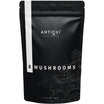
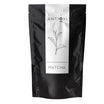
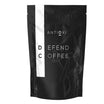
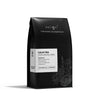
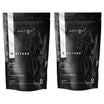


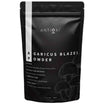
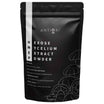
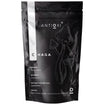
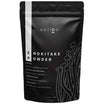
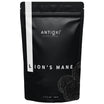
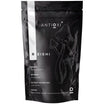
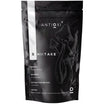
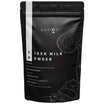
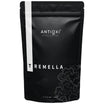
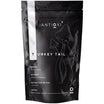
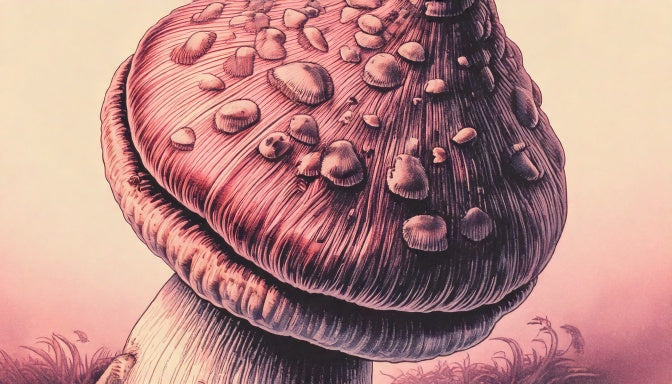
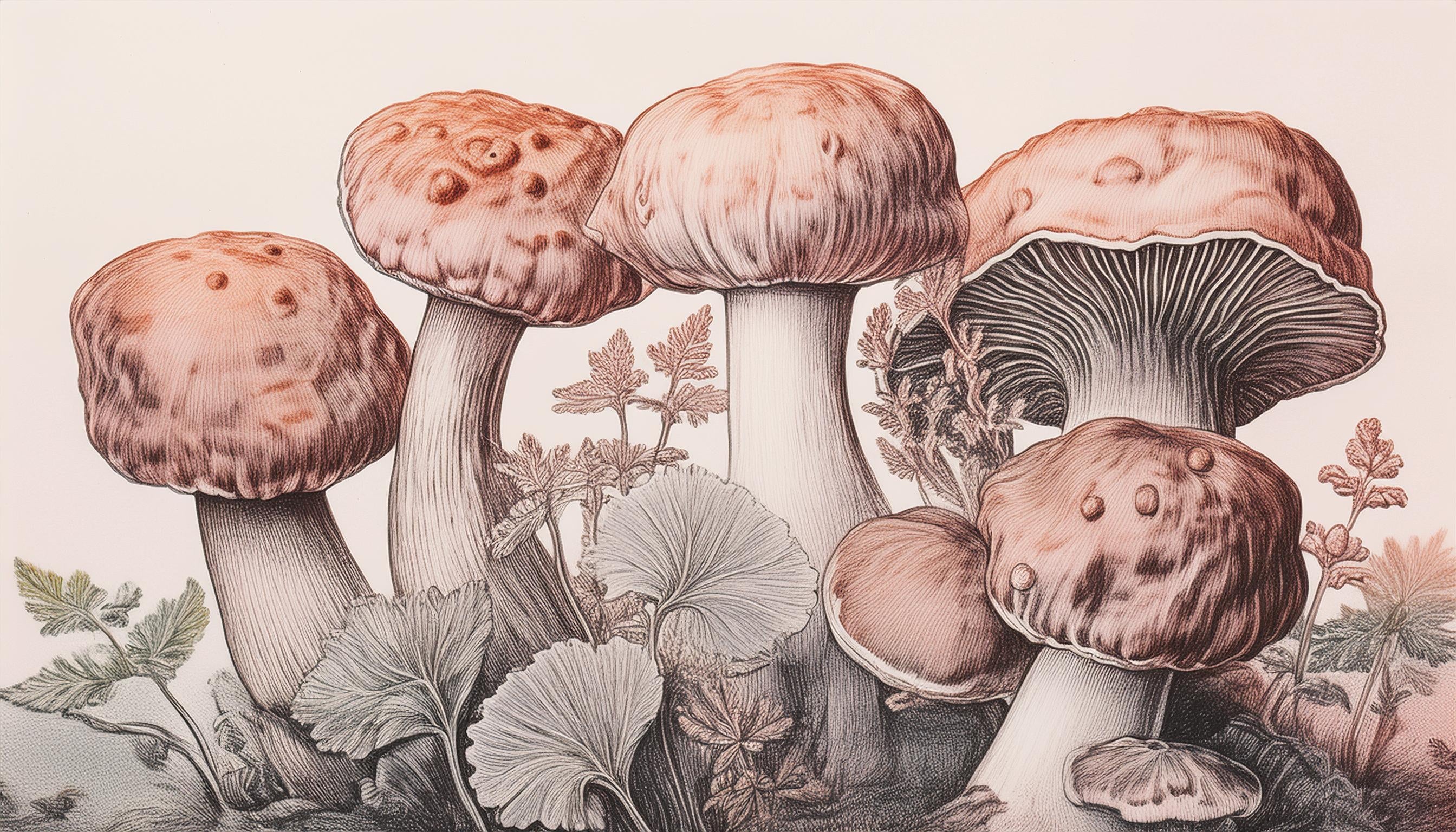
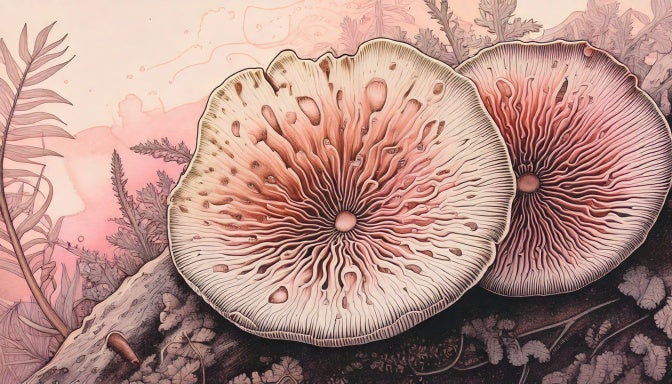
Leave a comment
All comments are moderated before being published.
This site is protected by hCaptcha and the hCaptcha Privacy Policy and Terms of Service apply.